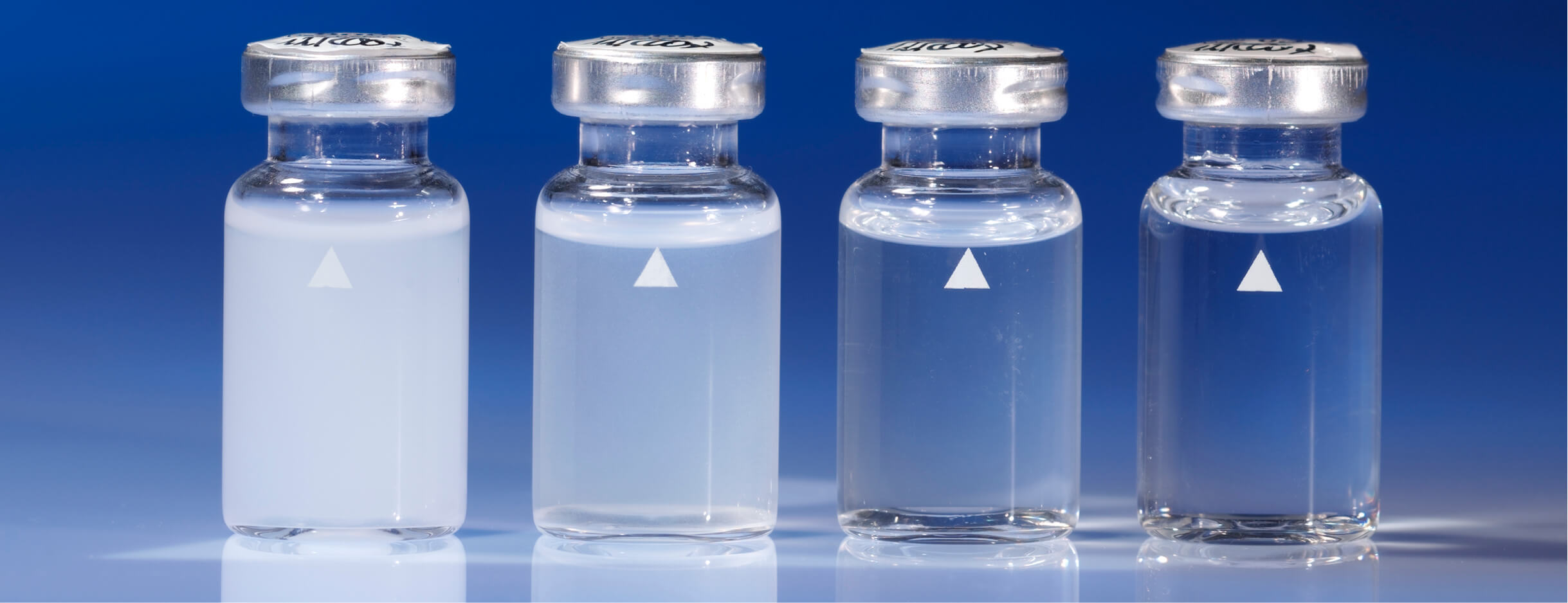Misura i tuoi campioni d'acqua con una precisione senza pari, sia che abbiano valori di torbidità bassi o alti. Quello che prima era un vero problema è stato risolto dai nostri esperti: Multipath 90° BLAC® copre una gamma di torbidità unica.
A turbidity value is a way of quantifying the cloudiness, or haziness of a sample. It is calculated, using an instrument called a turbidimeter, by measuring the amount of light scattered or blocked by suspended particles in a water sample. We often think of turbidity in terms of things like microorganisms, silt or other materials - but turbidity can literally anything present in the sample that causes the light beam to scatter. Turbidimeters are available as portable, benchtop or online instruments.
L'ISO (Organizzazione internazionale per la standardizzazione) e l'EPA degli Stati Uniti sono le due principali organizzazioni che stabiliscono i criteri di progettazione di un turbidimetro Il rispetto di uno di questi standard dipende dalla regione.
In pool water, turbidity is an indication for the effectiveness of the filter system and cleaning agents. In drinking water it indicates the possible bacterial growth. In sewage treatment plants the turbidity is an indicator of quality in the cleaning procedures. In industries, turbidity is a quality criterion for products. The cause of turbidity is usually tiny small particles or droplets that do not dissolve in the surrounding liquids.
In pool water, turbidity is an indication for the effectiveness of the filter system and cleaning agents. In drinking water it indicates the possible bacterial growth.
If a light beam hits a liquid that is clouded by small, undissolved particles, part of the light is scattered to the side of the incoming beam. The phenomenon is called the Tyndall effect.
The scattering depends on the way the light hits the particle, but also on its shape.
A detector placed at 90° detects the scattering caused by the particles. The greater the scatter, the higher the turbidity value. Depending on the application or industry in which the device is used, additional scattered light detectors can be used at other angles.
When disinfecting surface water or water that is affected by surface water during treatment in waterworks, checking the turbidity is of crucial importance for choosing the optimum disinfection effiency. With the PTV 1000 series instruments, Lovibond® has developed on-line turbidimeters that successfully handles the usual problems in this area in practice. This has now been confirmed by a long-term test in the drinking water treatment of a Dutch waterworks.
Il monitoraggio del parametro indicatore della torbidità con un valore limite di 1 NTU / FNU è uno degli obblighi legali del gestore di un acquedotto ed è considerato rispettato se questo valore viene mantenuto all'uscita dell'acquedotto. I laboratori interni di solito si assumono questi compiti e riferiscono i risultati all'autorità di controllo responsabile secondo un piano di campionamento definito.
La serie PTV Lovibond® di torbidimetri di processo offre quattro diverse fonti di luce incidente. Queste diverse fonti di luce sono state necessarie per soddisfare i requisiti normativi, che differiscono in tutto il mondo. Le varianti PTV 1000 WL, PTV 2000 e PTV 6000 sono approvate dall'USEPA in base al Safe Drinking Water Act e sono applicabili per l'uso nella segnalazione delle torbidità dell'effluente del filtro e dell'effluente del filtro combinato degli impianti di acqua potabile. La versione PTV 1000 IR è conforme ai criteri di progettazione ISO 7027 per la misurazione della torbidità sotto i 40 FNU3. Rispetto a queste tre versioni di turbidimetri, è solo la sorgente luminosa che differisce. Anche se queste quattro fonti di luce sono approvate a livello normativo, ci si aspetta che forniscano risultati leggermente diversi. Queste differenze e le loro cause saranno discusse.
